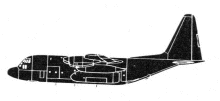Incident Overview

Description
A Canadair CRJ-100ER RegionalJet passenger plane, 5Y-JLD, operated by JetLink Express on behalf of Rwandair, was substantially damaged when it struck an airport building at Kigali Airport (KGL), Rwanda. One passenger was killed. The airplane operated on a scheduled international flight to Entebbe Airport (EBB), Uganda. Flight 205 departed Kigali at 12:54 hours local time. During the initial takeoff climb, the flight crew experienced a jammed thrust lever for the number 1 (left) engine and was unable to reduce the power. The captain notified air traffic control, and entered into a holding pattern, while the first officer and an accompanying company maintenance engineer unsuccessfully tried to rectify the jammed throttle problem. The captain decided to return to Kigali where, on a second attempt, a landing was performed on runway 28. The captain then taxied to the parking bay where he stopped the airplane, shut down the number 2 (right) engine; however the number 1 engine continued to operate at high power settings. The airplane taxied back to the apron. However as the ground crew went to put on the main gear wheel chocks, the aircraft suddenly accelerated, turned right knocking over blast fences until it hit the eastern wall of the VIP building after covering a distance of about 500 meters. After hitting the wall, the flight attendants aboard the aircraft initiated an evacuation sequence and the passengers escaped through the over-wing emergency door and walked away from the aircraft to the terminal building. The nose gear collapsed and the nose was buried inside the building up to and including the left hand forward passenger door. Probable Cause: “The flight crew’s failure to identify corrective action and their lack of knowledge of applicable airplane and engine systems in response to a jammed thrust lever, which resulted in the number 1 engine operating at high power and the airplane configured in an unsafe condition that led to the need to apply heavy braking during landing. Also causal was the flightcrew failure to recognize the safety hazard that existed from overheated brakes and the potential consequence on the braking action needed to park the airplane. Contributing factors included the possible failure by maintenance crew to correctly stow the upper core cowl support strut after maintenance, Flightcrew’s failure to follow standard operating procedures, the company’s failure to be availed to manufacturer safety literature on the subject, and the susceptibility of the cowl core support shaft to interfere with the throttle control mechanism when the core strut is not in its stowed position.”
Primary Cause
The flight crew’s failure to identify corrective action and their lack of knowledge of applicable airplane and engine systems in response to a jammed thrust lever, which resulted in the number 1 engine operating at high power and the airplane configured in an unsafe condition that led to the need to apply heavy braking during landing. This was compounded by the flight crew’s failure to recognize the safety hazard of overheating brakes and the potential consequence on the braking action needed to park the airplane.The flight crew’s failure to identify corrective action and their lack of knowledge of applicable airplane and engine systems in response to a jammed thrust lever, which resulted in the number 1 engine operating at high power and the airplane configured in an unsafe condition that led to the need to apply heavy braking during landing. This was compounded by the flight crew’s failure to recognize the safety hazard of overheating brakes and the potential consequence on the braking action needed to park the airplane.Share on:





